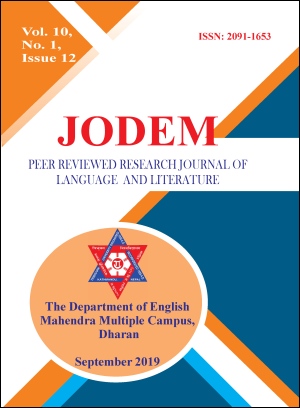Language as Cultural Expression: The Case of Limbu Mundhum and Ritual* Ramesh Kumar Limbu
DOI:
https://doi.org/10.3126/jodem.v11i1.34813Keywords:
Cultural expression, High Variety language, Limbu Mundhum, Low Variety language, ritual languageAbstract
An anthropological study of „religious /ritual language‟ concerns the relationship between the study of language and the study of culture. This article, using ethnolinguistics and ethnographies of communication as tools of study, examines how the Mundhum language distinctively maintains ethnographic communication by use of the ritual language, and communicates the social worldviews and cultural cognition of Limbu community. The Limbu, known also by endonym "Yakthung", are one of historically notable indigenous communities of Nepal. They have their own distinctive culture based on traditional ritual performances guided by Mundhum. The Mundhum is narrated and recited by Limbu ritual/religious actants/officiants in cultural/ritual observations, that is, rituals from pre-birth to after death. The study focuses on the issue how the Mundhum language, also known as Ritual Language (RL), is distinctive to the everyday language or Ordinary Language (OL) and helps express their cultural perceptions, behaviours and way of life. In doing so, it also shows the way this ritual/liturgical language influences not merely the kinds of speech but also the aspects of tradition, culture and way of life.
Downloads
Downloads
Published
How to Cite
Issue
Section
License
© Department of English, Mahendra Multiple Campus, Dharan, Nepal

